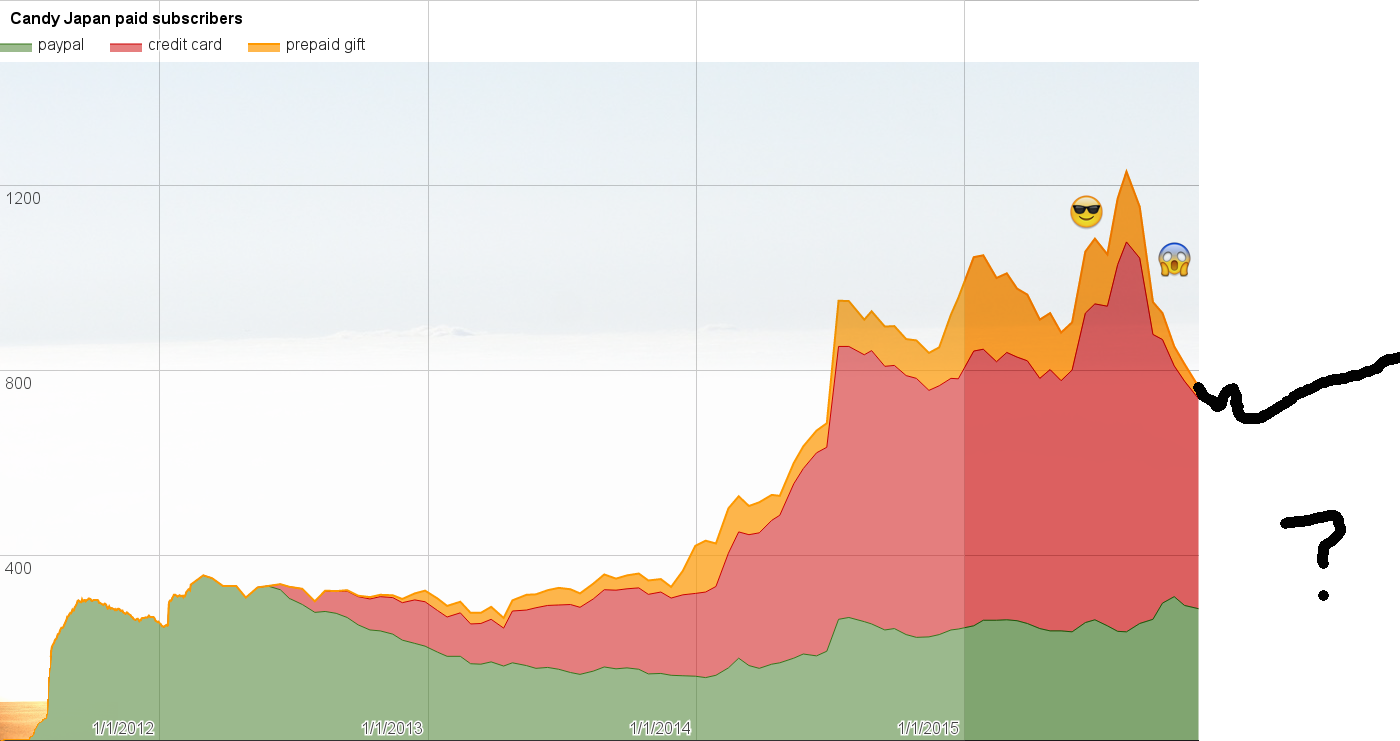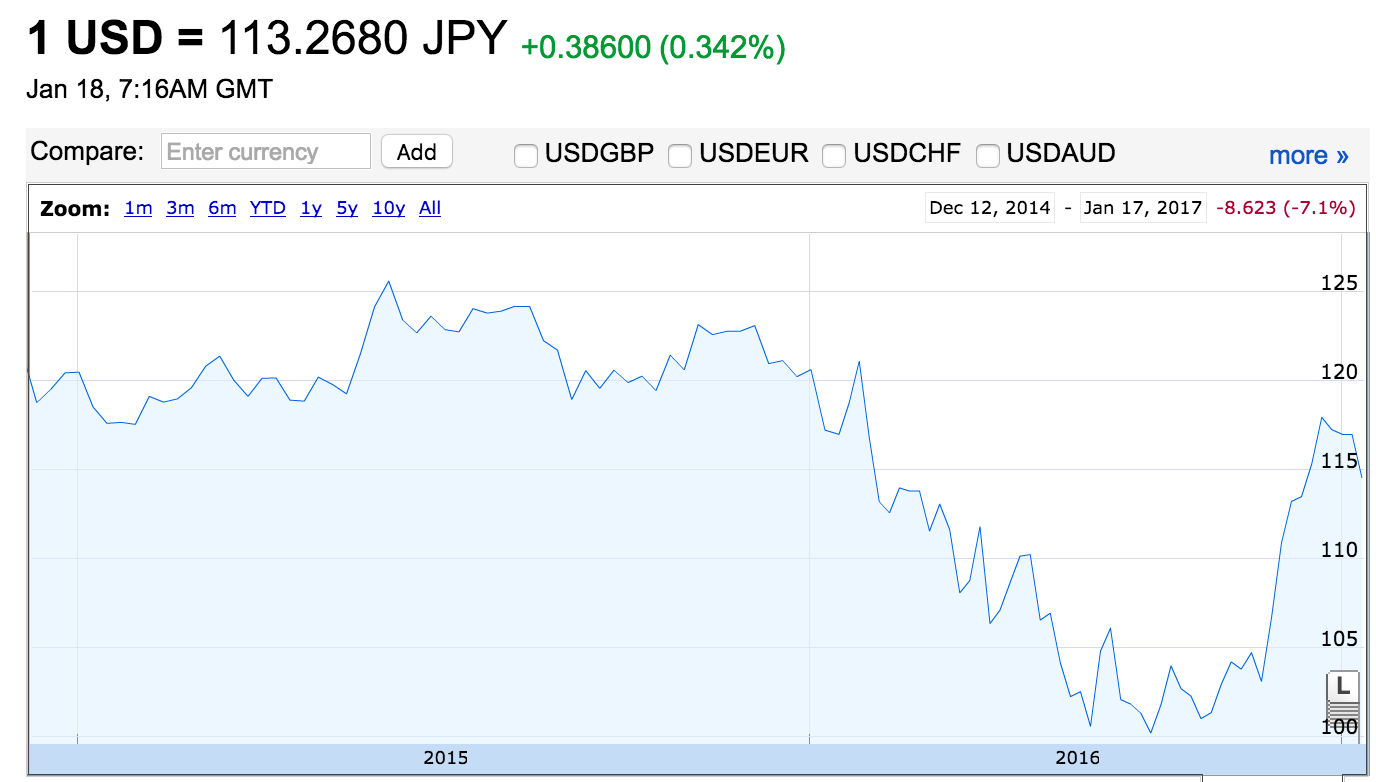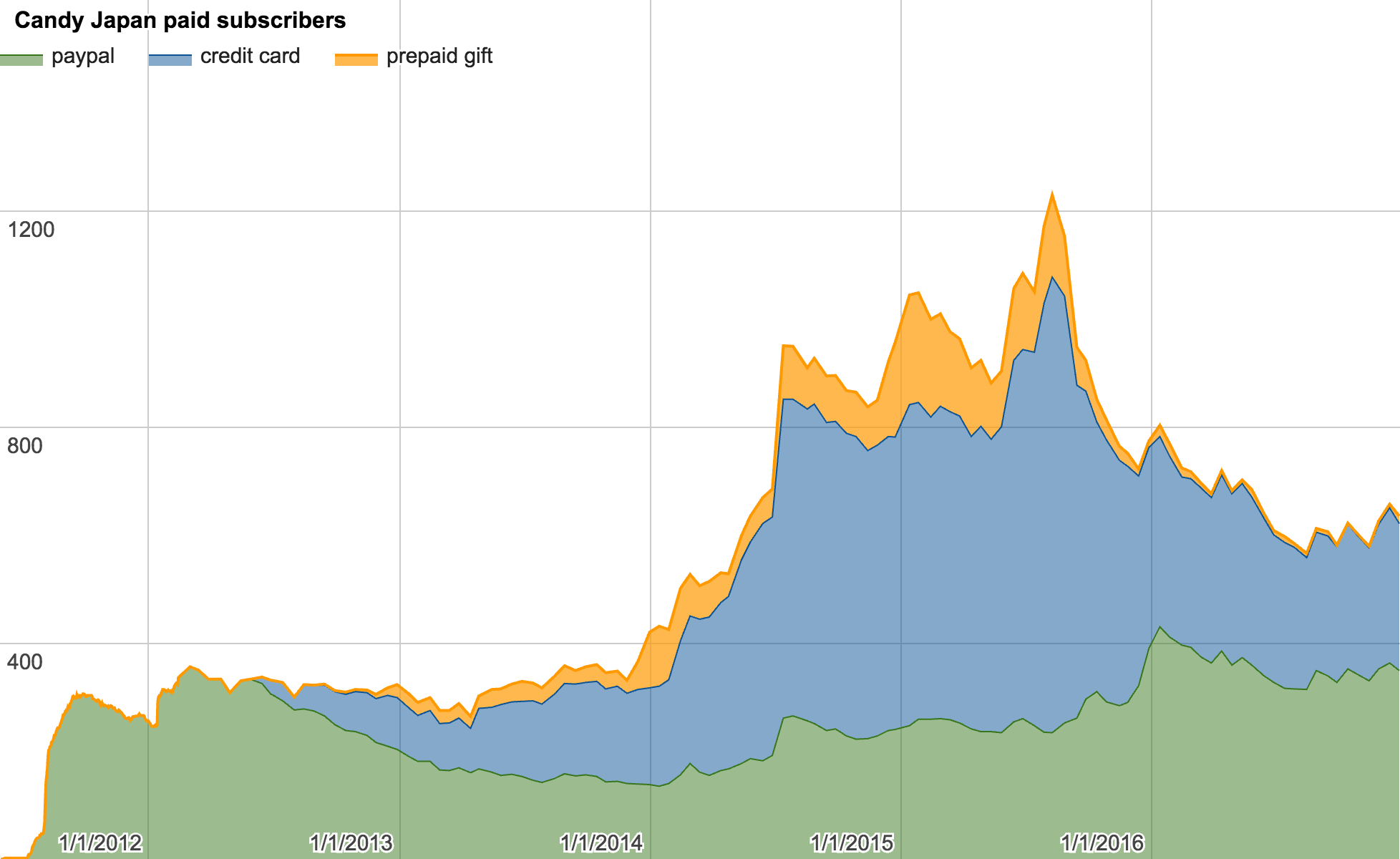

Candy Japan 2016 Year in Review
Candy Japan ships candy to subscribers twice a month. I have been writing openly about running the business for about 5 years now. I'll start this year's post with a bit more backstory than usual, so feel free to skip to the numbers if that's what you are here for.
How I ended up living in Japan
I had already been running an online store selling Japanese comic books while an exchange student in Tokyo (at ICU, would highly recommend them for intensive Japanese study).
The manga store was only making a few hundred dollars in monthly profit, which being just a student was still significant to me at the time. I managed to get the exchange study period extended to two years, but even after it was over I still wanted to keep living in Japan.
I had to go back to my home country Finland to finish my computer science degree. My then girlfriend (now wife) went back with me. She's wicked smart and hard-working, and in Finland she managed to start and finish an entire engineering degree in less time than it took me to complete mine (even though it was already half-done).
With these pieces of paper in our pockets, we felt it was time to return to Japan. The plan was that I would continue to do web stuff at home, while she would pursue a more normal career. To find her a job, we flew to a job fair for Japanese people — in Boston! I thought it was nuts to fly all the way to US just to attend some interviews, but it worked. She landed a job and got assigned to an office in Tokushima, Japan.

Why I started Candy Japan
From everything I had read the hours and work-life sounded soul-crushing in Japanese software companies, so I didn't want to apply to one of those. The choices would have been very limited anyway, as Tokushima is quite small.
Still, I needed to find a way to support the cost of living here (luckily cheaper than Tokyo!), so I started to search if there might be something I could sell online that would take advantage of my location. But what can I sell?
I had been following a new shopping trend even before we moved to Japan.
The first handful of "subscription boxes" had just started popping up (although the term hadn't been coined yet), and it seemed like a more appealing model than a traditional online store. Instead of picking products into a cart and placing an order yourself, you just subscribe and then boxes of random cool surprises start appearing periodically to your door.
From my perspective a subscription box seemed more appealing to run than setting up another online store, as I could send the same contents on the same day to everyone. That means less storage, inventory management or mistakenly stocking items no-one wants to buy.
To choose my subscription product I researched long and hard about what to send, and finally settled on candy. In other words I went to a convenience store and looked around randomly one night. I figured you can always eat more sweets, and they are quite different here from the rest of the world, with new varieties coming out so often that I could always keep sending new candy to try.
Launching the service
To get some initial customers I asked people who had bought comic books from me before whether they might be interested in subscribing to candy, and got three people to sign up. For the first few shipments I was just sending stuff to those three people.
That validated that there would be at least some interest for this thing, so I set out to build it out some more. There was no ready-made system to use for subscription boxes at the time, so I made my own in Python. It's gradually grown (and has never been refactored, yikes), as over the years I kept adding new features as they seemed necessary. I wrote another post about the codebase.
After I got a simple website up I launched the site with a post to Hacker News in 2011. From there the Japan-related blogs Tofugu, Japanator and Laughing Squid picked it up (thank you!) and also covered the launch, sending the site very highly targeted traffic.
That in turn lead to even more sites mentioning it, giving the site a nice boost in Google search rankings. You might think that not many people would be searching for Japanese candy, but around this time Japanese candy videos had started trending on YouTube (look at the view counts). Many people were searching for it, likely after seeing these videos, and would often land on my site.
All this helped get the site to a ramen profitable stage in about 3 months.
Back to the future
All of that happened about 5 years ago.
Below is a chart of paid subscriber growth up to 2015, along with a scribble showing how I guessed 2016 would turn out. I'll show you what really happened in a bit.
In case you are wondering about that huge peak at the end surrounded by the two emoticons, that was due to credit card fraud and turned out not to be real.

2016
We sent literally metric tons of sweets to people, totaling 15,710 boxes of candy.
I thought it would be fun to try to visualize what an entire year's worth of boxes looks like. Excuse the crude image, I'm no Blender guru, but at least this is to scale. If you ate all of these on top of your normal meals, you would gain enough calories to be the size of a beluga whale.
Sales were roughly $15,000 / month. So it was a great year?

Not so fast
The main challenge last year was credit card fraud, which I got under control. This year the challenge turned out to be the fluctuation in USDJPY exchange rate. Why would that be a problem?
Why the exchange rate affects profit
As an example, suppose 1 dollar = 120 yen and you have a subscription costing $10 / month, of which $2 / month is your profit. You get paid in US dollar, but buy all goods and shipping in Japanese yen. If yen gets more expensive, say 1 dollar = 105 yen, what happens to your profit?
It goes down to $1 / subscriber.
In other words, a mere 12.5% change in the exchange rate can mean a 50% drop in profit, and as you can see below, last year was quite unstable.

Negative feedback loops
Reality is even worse, because this has some nasty feedback effects as well. Here's one of them:
1) With a lower profit, I can't bid as high for ads, resulting in lower sales.
2) With less boxes getting sent, I'm not eligible for the same shipping and product discounts.
3) This lowers the profit, which results in… see item number 1.
Just give me the 2016 numbers!
OK fine, here's the chart.

As for profits (the money I can actually keep), for a while during the year I thought I might actually go into the red. I ended up making a modest profit, but would have made more money working at minimum wage.
For this I only have myself to blame, for not building enough leeway to sail through exchange rate changes, and for not hustling harder to build organic traffic, jazz up the service to get more people to sign up, or find more affordable marketing channels — many things I must do better!
Thanks for reading
If you would like to try some of the candy for yourself, you can subscribe to Candy Japan here.